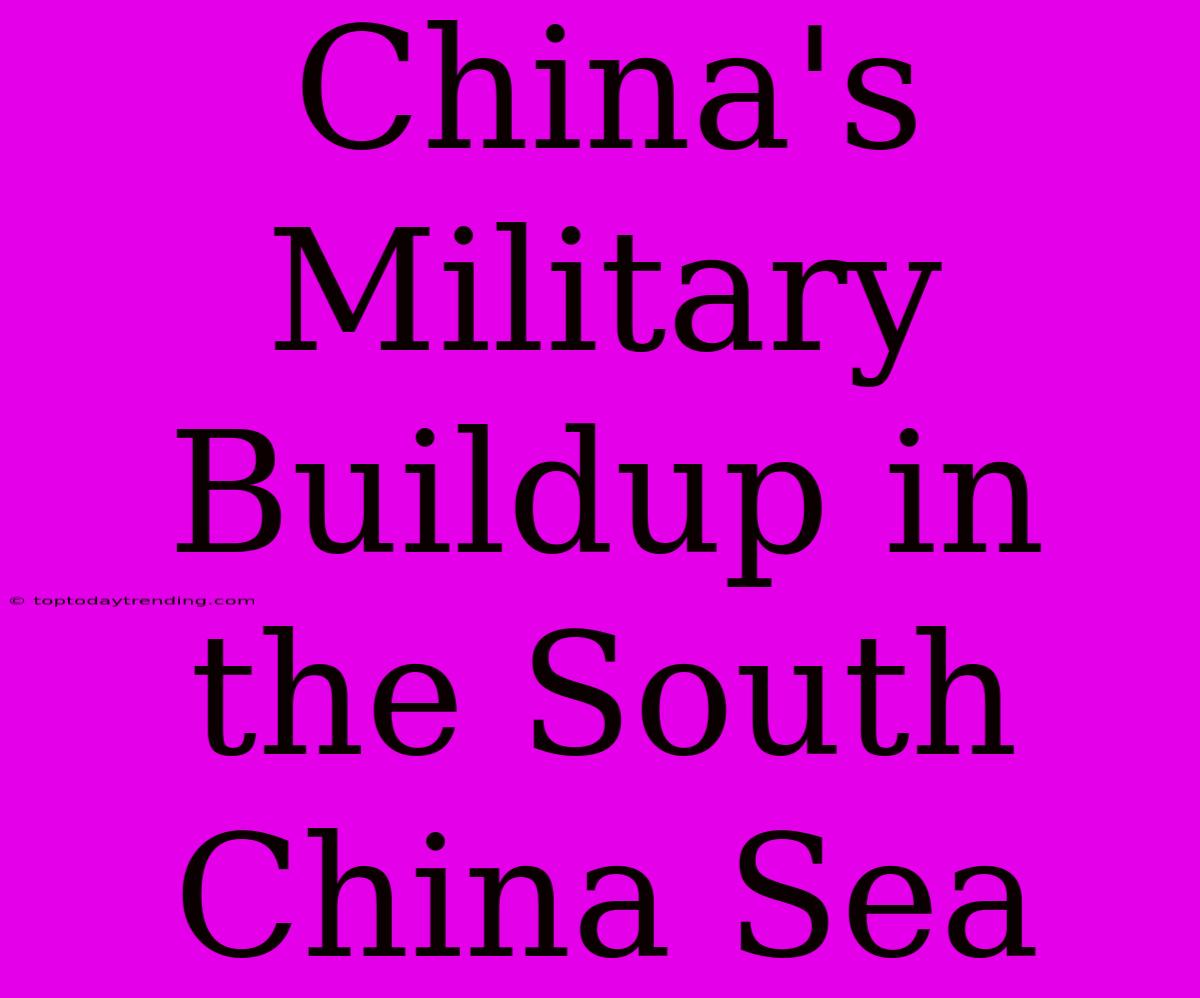China's Military Buildup in the South China Sea: A Growing Source of Regional Tension
The South China Sea, a vital waterway teeming with maritime trade and rich in resources, has become a focal point of geopolitical tension in recent years. This escalating tension stems primarily from China's assertive actions in the region, particularly its ambitious military buildup, which has raised concerns among neighboring countries and the international community.
China's Claims and Actions:
China's claims to sovereignty over almost the entire South China Sea, based on a historical "nine-dash line," have been met with fierce opposition from countries like Vietnam, the Philippines, Malaysia, Brunei, and Taiwan, each of whom also claim parts of the contested waters.
Here's a breakdown of China's actions:
- Island Construction: China has dramatically expanded and fortified several disputed features in the Spratly Islands, transforming them into military outposts equipped with runways, radar systems, and sophisticated weaponry.
- Military Modernization: China's military is undergoing a rapid modernization process, including the deployment of advanced warships, submarines, fighter jets, and missiles, all capable of projecting power further into the South China Sea.
- Air and Naval Patrols: China's military conducts regular air and naval patrols in the region, often near disputed features claimed by other countries, demonstrating its assertive control over the waterway.
- Anti-Access/Area Denial (A2/AD) Capabilities: China is actively developing anti-access/area denial (A2/AD) capabilities, such as long-range missiles and electronic warfare systems, aimed at deterring potential adversaries from intervening in the South China Sea.
Regional Concerns and International Responses:
China's assertive actions in the South China Sea have sparked widespread concern among its neighbors and the international community. Here are some key concerns:
- Increased Military Tension: The military buildup has increased tensions in the region, raising the risk of accidental or intentional conflicts.
- Regional Instability: The disputes over sovereignty and resources can escalate into larger regional conflicts, threatening stability and economic development.
- Freedom of Navigation: China's actions raise concerns about the freedom of navigation and overflight in the South China Sea, vital for international trade and maritime security.
- Legal and Diplomatic Challenges: China's claims are widely challenged by international law and the UN Convention on the Law of the Sea (UNCLOS), leading to diplomatic clashes and legal disputes.
International responses include:
- US Navy Operations: The US Navy conducts regular freedom of navigation operations (FONOPs) in the South China Sea to challenge China's excessive claims and assert the principle of international law.
- Joint Military Exercises: Several countries, including the US, Japan, Australia, and India, have conducted joint military exercises in the region, showcasing their combined military capabilities and deterring China's aggressive actions.
- Diplomatic Pressure: The international community has applied diplomatic pressure on China to resolve the disputes peacefully and abide by international law.
- International Arbitration: The Philippines successfully challenged China's claims in the Permanent Court of Arbitration (PCA), but China refused to recognize the ruling.
Implications for the Future:
The situation in the South China Sea remains complex and dynamic. The ongoing military buildup and regional tensions raise concerns about potential conflict, but also create opportunities for diplomatic solutions. Here are some key takeaways:
- Diplomacy and Dialogue: Finding a peaceful resolution through dialogue and diplomacy is crucial to avoid escalating tensions and maintain regional stability.
- International Law and Order: Upholding international law and the UNCLOS is essential for ensuring freedom of navigation and peaceful settlement of disputes.
- Transparency and Cooperation: Increased transparency and cooperation among regional actors are critical for building trust and preventing miscalculations.
- Regional Cooperation: Enhancing regional cooperation on issues such as maritime security, environmental protection, and economic development can contribute to a more stable and prosperous South China Sea.
The South China Sea is a critical region for international trade, security, and stability. The future of the region hinges on a peaceful and cooperative approach to resolving disputes, upholding international law, and fostering regional cooperation.

